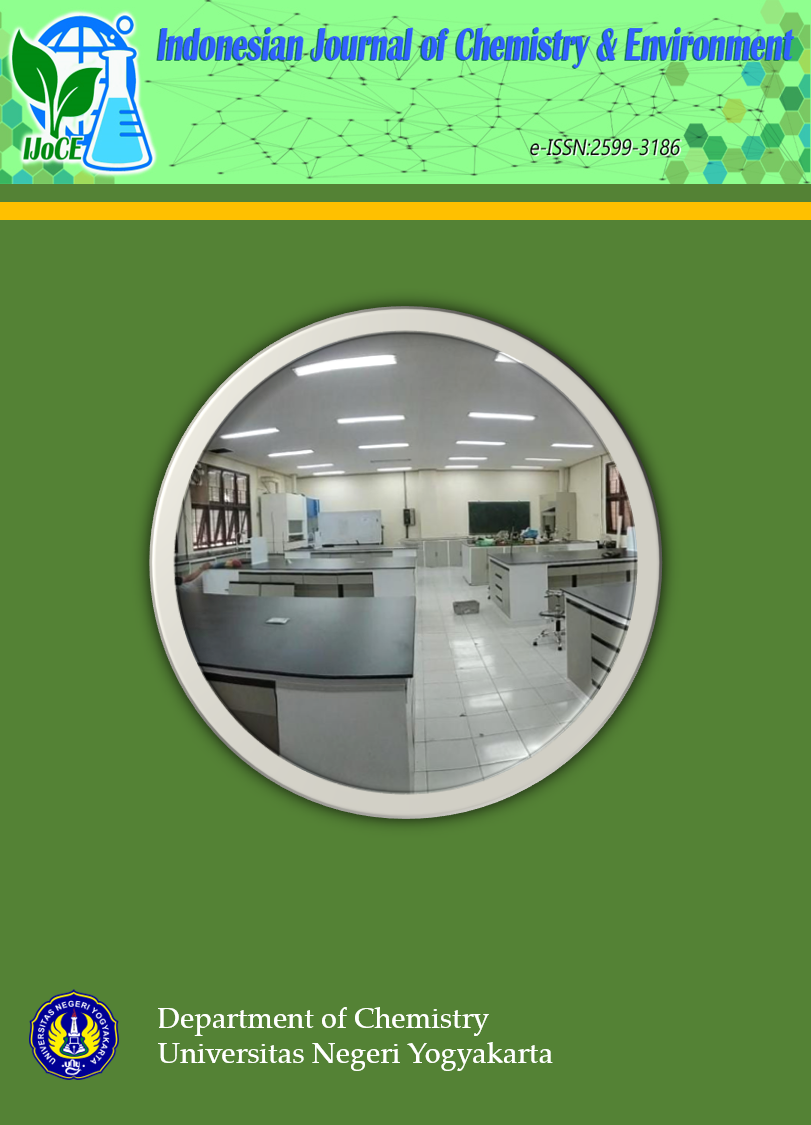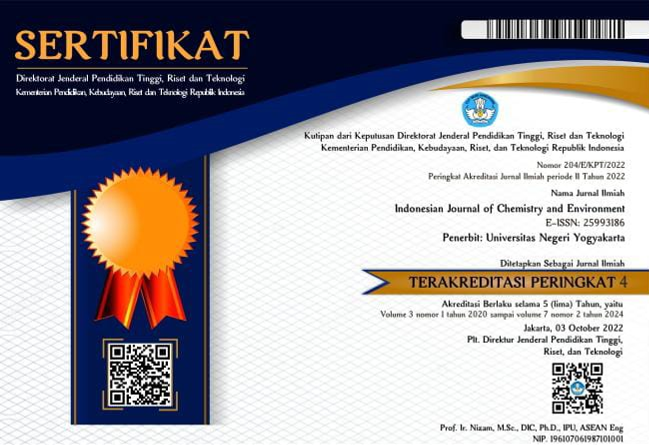Adsorption of Cr on Liquid Waste of Tannery Industry using Banana Peel Charcoal in various pH and Time Activation
DOI:
https://doi.org/10.21831/ijce.v2i1.30292Abstract
The purpose of the research is to determine the effect of activation time of banana peel charcoal on the adsorption capacity of Cr metal's tannery industry. Banana peel charcoal is made by carbonization process followed by activation using HCl solution with varying time. The activated charcoal with optimum activation time is used to determine the optimum pH of tannery waste on adsorption Cr metal. Banana peel as much as 600 grams then carbonized can form 42 grams of banana peel charcoal. The concentration of Cr metal initial that contained in tannery waste was 292.1 ppm. The optimum activation time is 1 hour, with decreasing Cr metal as much as 141.87 ppm using 1 gram of banana peel activated charcoal. While the pH variation of waste does not provide a significant difference.
Downloads
Published
2020-02-21
How to Cite
[1]
Atmasari, A.D. et al. 2020. Adsorption of Cr on Liquid Waste of Tannery Industry using Banana Peel Charcoal in various pH and Time Activation. Indonesian Journal of Chemistry and Environment. 2, 1 (Feb. 2020), 19–24. DOI:https://doi.org/10.21831/ijce.v2i1.30292.
Issue
Section
Articles
Citation Check
License
Authors who publish with this journal agree to the following terms:
- Authors retain copyright under a Creative Commons Attribution–ShareAlike License (CC BY SA) that allows others to share: copy, and redistribute the material in any medium or format, Adapt: remix, transform, and build upon the material, for any purpose, even commercially.
- Authors are able to enter into separate, additional contractual arrangements for the non-exclusive distribution of the journal's published version of the work (e.g., post it to an institutional repository or publish it in a book), with an acknowledgement of its initial publication in this journal.
- Authors are permitted and encouraged to post their work online (e.g., in institutional repositories or on their website) prior to and during the submission process, as it can lead to productive exchanges, as well as earlier and greater citation of published work.










